Learn about animal cells with this fun and free printable animal cell coloring activity! Coloring an animal cell model is a quick STEAM project, perfect for any time of the year. Color in and label the parts of an animal cell as you explore what makes animal cells different from plant cells. Pair this animal cell project with our printable plant cell coloring sheets!
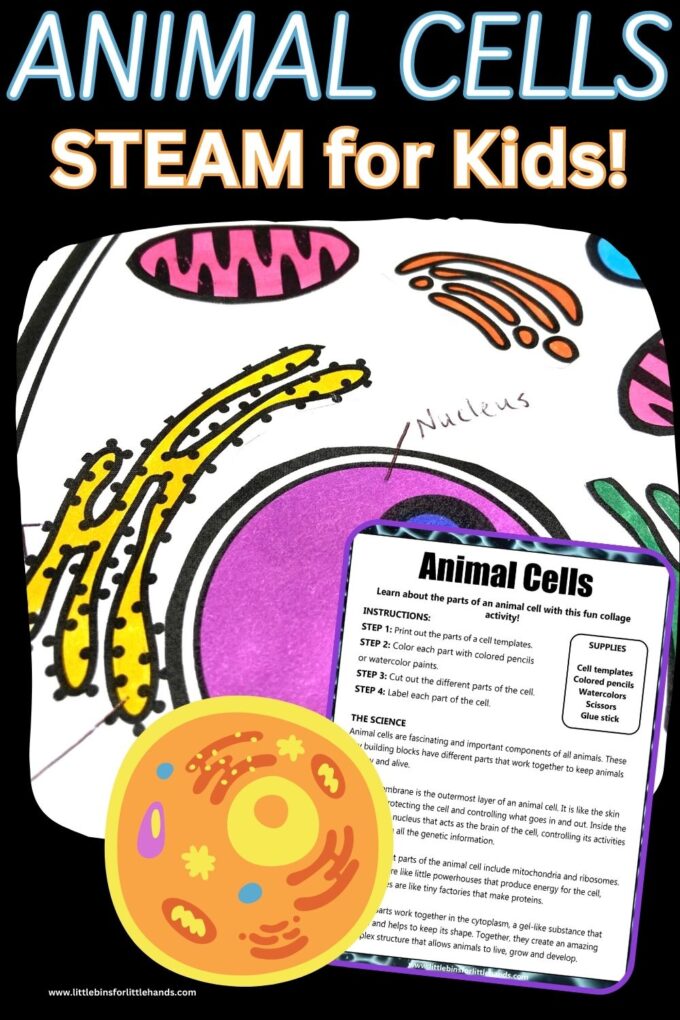
Explore Animal Cells for Spring Science
Spring is the perfect time of year for science! There are so many fun themes to explore. For this time of the year, our favorite topics to teach kids about spring include rainbows, geology, Earth Day and plants!
Get ready to add this fun animal cell coloring activity, to your lesson plans this season. Our science activities and experiments are designed with you, the parent or teacher, in mind!
Easy to set up, quick to do, most activities will take only 15 to 30 minutes to complete and are heaps of fun! Plus, our supplies lists usually contain only free or cheap materials you can source from home!
Learn about the parts of an animal, and what makes it different to a plant cell! While you’re at it, make sure to check out these other fun spring science activities.
The Parts of an Animal Cell
Animal cells are fascinating structures that play an essential role in the life of all animals. Animal cells contain a nucleus and structures called organelles, which have different functions.
A single cell can form a living organism. In higher-order animals, cells are organized together to form structures such as tissues, organs, bones, blood, etc., and will have specialized tasks.
Animal cells are different from the cells of plants. They don’t make their own food like plant cells do. Learn about plant cells here.
Cell Membrane. This is a thin barrier that surrounds the cell and acts as a guard for the cell. It controls what molecules are allowed in and out of the cell.
Cytoplasm. A gel-like substance that fills the cell and helps it to keep its shape.
Nucleus. This organelle contains the cell’s genetic material or DNA and controls the activities of the cell.
Nucleolus. It is found within the nucleus, and is responsible for producing and assembling the cell’s ribosomes which are then transported to the cytoplasm.
Vacuole. A simple storage unit for food, nutrients or waste products.
Lysosomes. Break down materials such as lipids, carbohydrates, and proteins into their parts. They also are responsible for breaking down and getting rid of waste products from the cell.
Centrioles. Animal cells have 2 centrioles which are located near the nucleus. They help with cell division.
Golgi Apparatus. Also called golgi body. These organelles package proteins into vesicles (a fluid like sac or vacuole) so they can be transported to their destination.
Mitochondria. An energy molecule that provides power to almost every function throughout the cell.
Ribosomes. Tiny particles found in large numbers in the cytoplasm, which make proteins.
Endoplasmic reticulum. A large folded membrane system that puts together lipids or fats and creates new membranes.
Add On These Fun Science Labs
Here are some more hands-on learning activities that would be wonderful additions to include with these animal cell coloring sheets!
Strawberry DNA Extraction
See DNA up close with this fun DNA extraction lab. Get the strawberry DNA strands to release from their cells and bind together into a format that’s visible with the naked eye.
Heart Model
Use this heart model STEM project for a hands-on approach to anatomy! All you need are some bendy straws and water bottles to demonstrate how the heart works.
Lung Model
Learn how our amazing lungs work, and even a bit of physics with this easy balloon lung model. A few simple supplies are all you need.
BONUS: DNA Coloring Worksheet
Learn all about the double helix structure of DNA with this fun and free printable DNA coloring worksheet! Color in the parts that make up DNA, as you explore our amazing genetic code.
Animal Cell Coloring Sheets
Use the worksheets (free download below) to learn, label, and apply the parts of an animal cell. Students can learn about the organelles in an animal cell, and then color, cut out and paste each part into a blank animal cell model!
Get your free printable animal cell coloring download!
Animal Cell Project Set Up
Note: With this animal cell project, you can get as creative as you want or as time allows. Use construction paper or other forms of media along with any mediums you like to create your animal cell model!
Supplies:
- Animal cell coloring sheets
- Colored pencils
- Watercolors
- Scissors
- Glue stick
Animal Cell Model Instructions:
STEP 1: Print out the animal cell coloring worksheets.
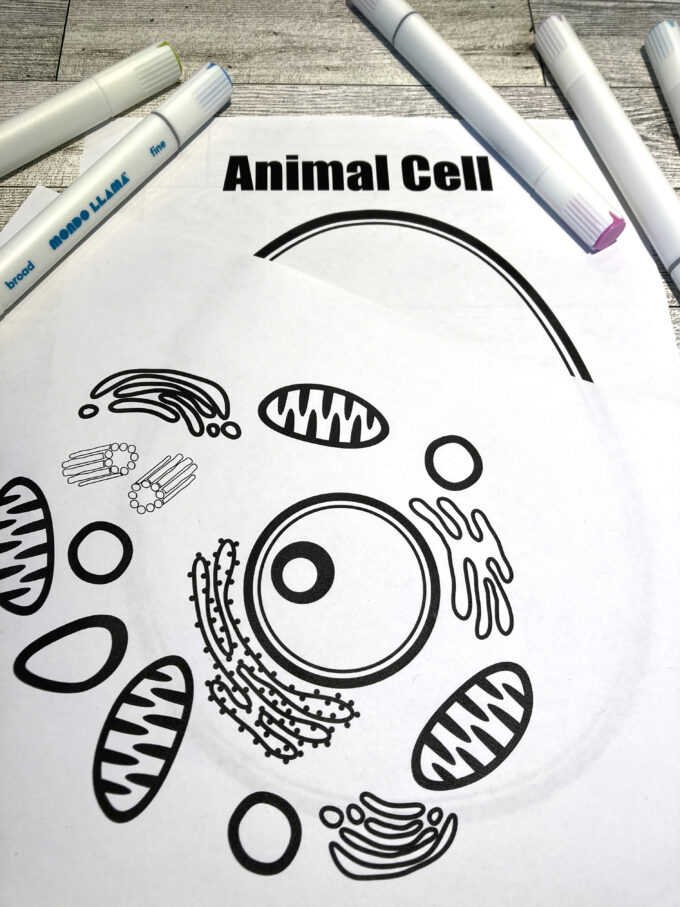
STEP 2: Color each part with colored pencils or watercolor paints.
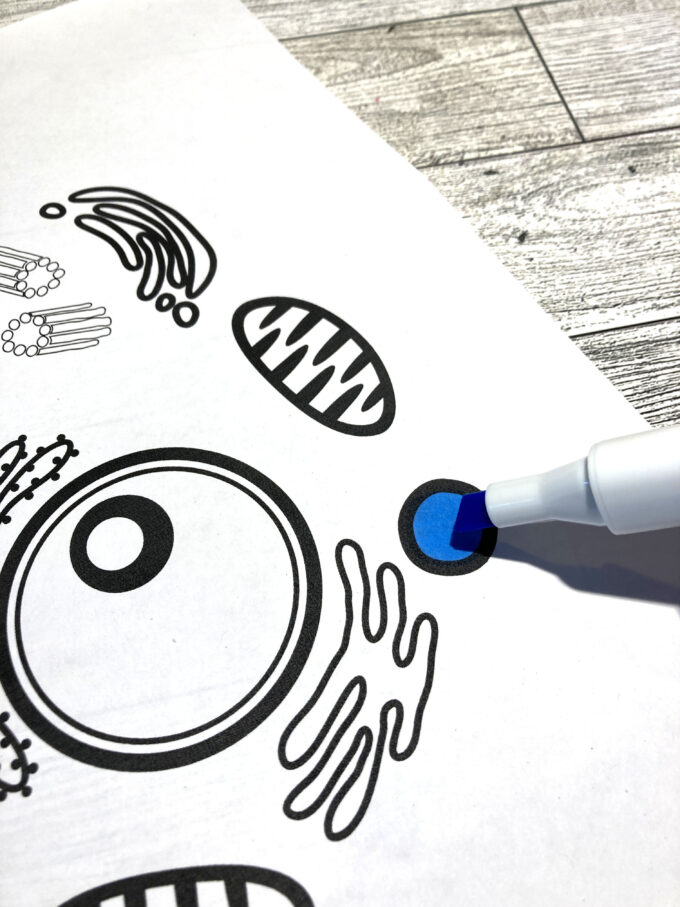
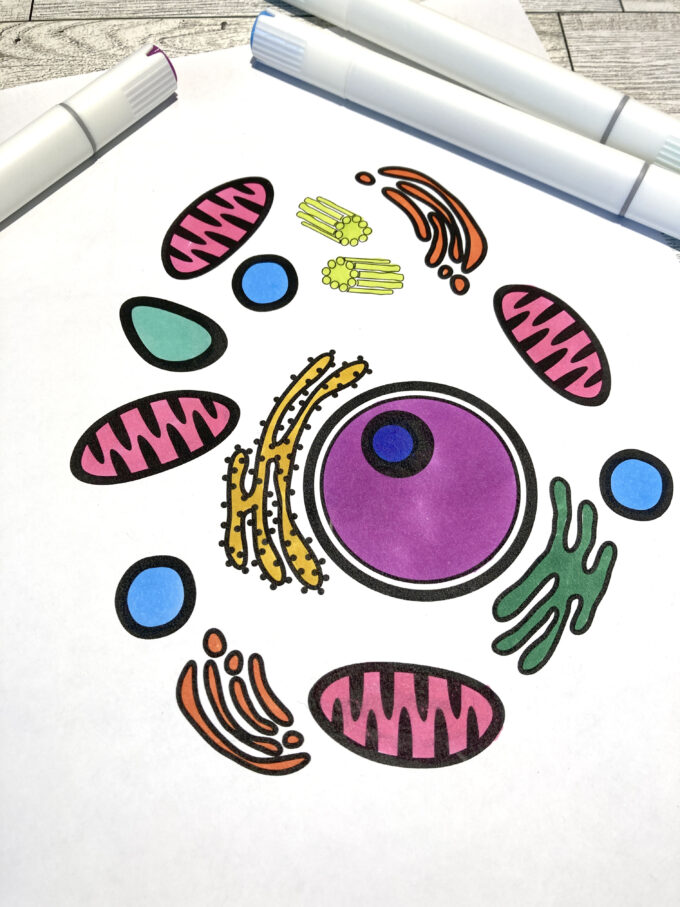
STEP 3: Cut out the different parts of the cell.
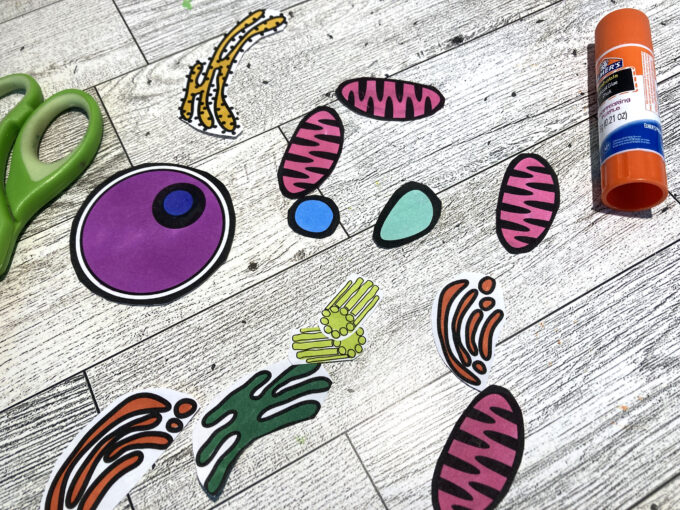
STEP 4: Use a glue stick to attach each part of the cell inside the animal cell.
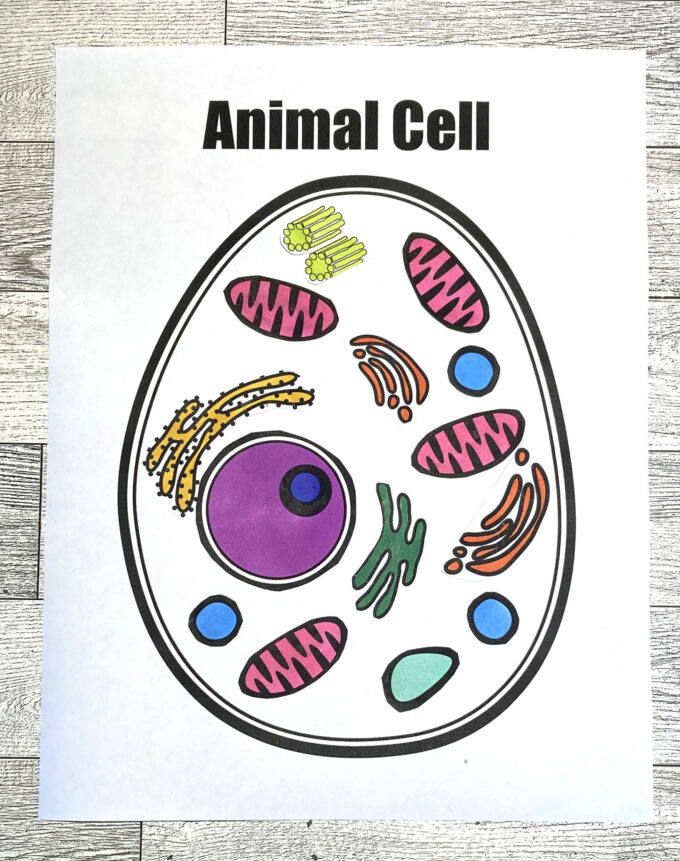
Can you identify each part of the animal cell, and what it does?
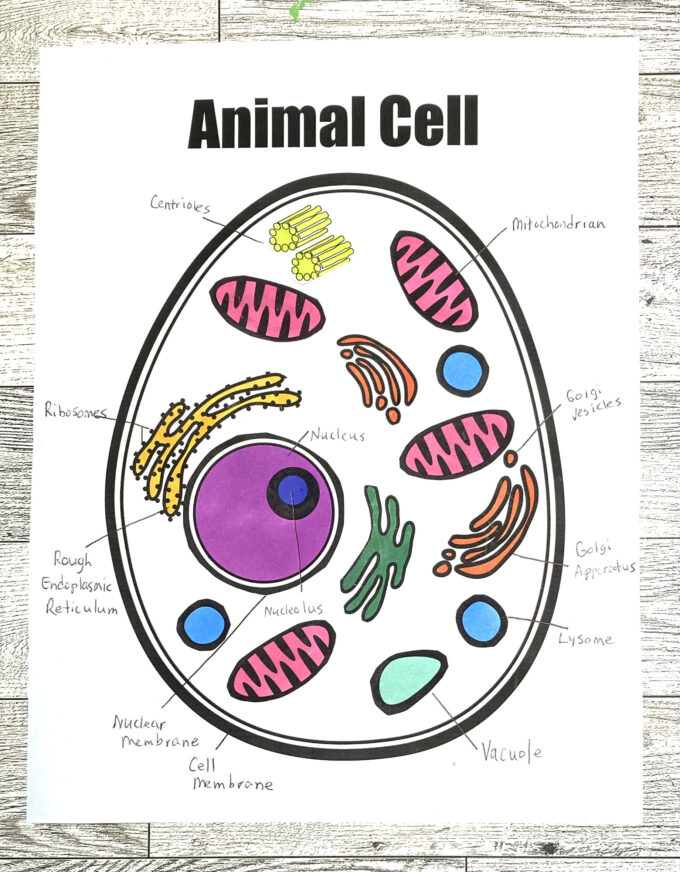
More Fun Science Activities
We have so much fun with hands-on science experiments for kids of all ages! We’ve put together a few different resources for different age groups, but remember that many experiments will cross over and can be used at different levels.
Science projects include using the scientific method, developing hypotheses, exploring variables, creating different tests, and writing conclusions from analyzing data.
Printable Animal and Plant Cell Pack
Want to explore animal and plant cells even more? Our project pack features extra activities to learn all about cells. Grab your pack here and get started today.
MORE HELPFUL SCIENCE RESOURCES
SCIENCE VOCABULARY
It is never too early to introduce some fantastic science words to kids. Get them started with a printable science vocabulary word list. You will want to incorporate these simple science terms into your next science lesson!
WHAT IS A SCIENTIST
Think like a scientist! Act like a scientist! Scientists like you and me are also curious about the world around them. Learn about the different types of scientists and what they do to increase their understanding of their specific areas of interest. Read What Is A Scientist
SCIENCE BOOKS FOR KIDS
Sometimes the best way to introduce science concepts is through a colorfully illustrated book with characters your kids can relate to! Check out this fantastic list of science books that are teacher approved and get ready to spark curiosity and exploration!
SCIENCE PRACTICES
A new approach to teaching science is called the Best Science Practices. These eight science and engineering practices are less structured and allow for a more free**-**flowing approach to problem-solving and finding answers to questions. These skills are critical to developing future engineers, inventors, and scientists!


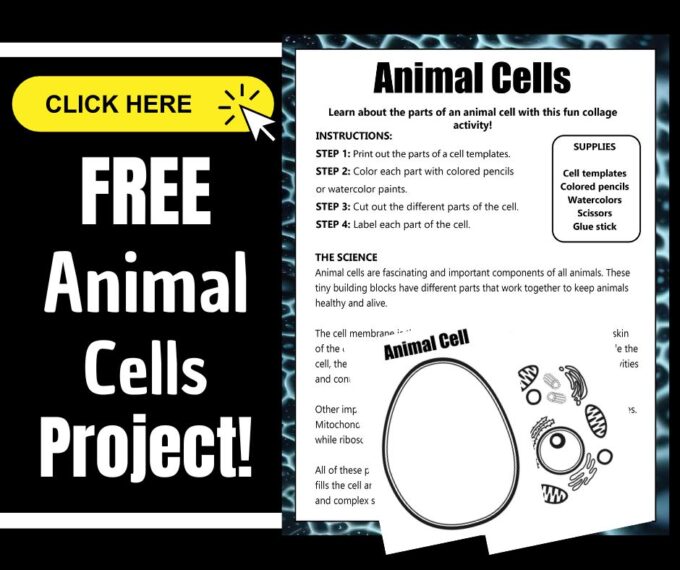
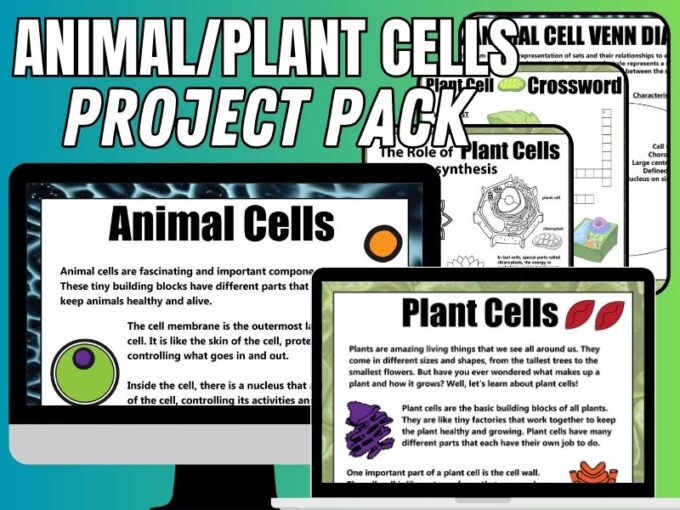






the above “click here for free download” of the animal cell doesn’t work
Hi, it’s been fixed. Thank you!